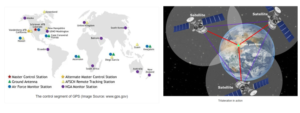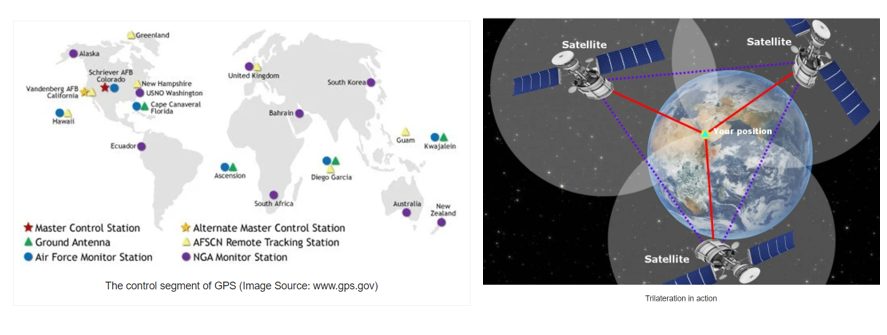With the advent of technology, have you ever wondered how does Global Positioning System (GPS) work on your smartphone?
Before we explore Global Positioning System (GPS) and its components, we must first understand Satellite Navigation. This is a system that provides geographical positioning of your device. Through this system, an end user can learn the location of objects with the aid of satellites which can also provide navigation and tracking of a device. The following are some of the geographical tracking systems used by different nations.
- GPS: owned and operated by the United States government, also one of the most popular, well-known satellite navigation systems.
- Galileo: European Union
- BeiDou: China
- GLONASS: Russia
- Quasi-Zenith: Japan
- NavIC: India
It is getting crowded up there! Even though it is not visible to the naked eye, there are estimated around 4500 satellites orbiting the earth, each at 12,427 miles (20,000 km) away from us. To put this distance in perspective, the distance between north pole and south pole is 8,595 miles (13,833 km), therefore, satellites orbiting the earth is roughly 1.5 times further than aforementioned distance.
For handheld GPS devices, in dash GPS receivers in vehicles, or in our smartphones, each has a GPS receiver built in so we can pinpoint exact location at anywhere on earth. There are three basic elements that need to work together in order for GPS to work cohesively: space segment, ground segment, and receivers.
Space segment: As indicated above, space segment refers to the satellites orbiting the earth. Each satellite contains atomic clocks which is accurate to one-billionth of a second. It also synchronizes with other satellites and sends microwave signals down to our ground units or referred to as ground segments.
Ground segments: Also referred to as control segments, these ground facilities consist of one Master Control Station, one Alternate Master Control station a back-up MCS, 11 command and control antennas, and 15 monitoring sites. These control segments collectively track all satellites, monitor their statuses, and send signals and data to them.
Receivers: The final third element are the end-users, as mentioned above, such as military devices, electronic devices, satellite phones, tablets, vehicle GPS systems, and our smart phones.
How does GPS actually work? At any given time, the receiver devices receive 3 to 4 satellite signals which indicate where the satellite was, and the time it was when the signal was sent. Once the devices receive these data, it calculates the distance of the satellites using the simple formula below. Once the formula is calculated, the information is processed, it can pinpoint where the user is by trilateration (see picture below). The receiver will inform the end user the location address by latitude and longitude information. Eg: address of Honolulu, Hawaii is latitude: 21.315603 and Longitude: 157.858093
D = vt: distance between satellite and receiver.
- D: distance between satellite and receiver.
- v: speed of the signal (300,000,000 m/s).
- t: time taken by the signal to travel from satellite to receiver.
The following are some everyday GPS applications used today around the world.
- Aircraft guidance using GPS to locate real-time positioning.
- Marine applications to guide boats and large vessels safely across large open seas or small channels.
- Surveying GPS applications allow surveying teams to map land areas, sea floors, and boundaries.
- Track locations of pets and elderly to avoid them from being lost by wandering around by themselves.
- Emergency roadside assistance or location of vehicles.
- Tracking of financial transactions around the world.
We often take technology for granted and have forgotten how it progressed from map orientation to the use of GPS on smartphones. However, if we dig deeper into technology, we are marveled at how quickly information is processed and displayed for our everyday use. One of the most distinguished features that Baby Car Safe utilizes is the GPS technology which is incorporated in our package. Baby Car Safe have adopted the same technology to assist parents to locate both the vehicle and the baby if unfortunate incidents occur. More details will be introduced at a later date.
Article references:
www.scienceabc.com/innovation/how-gps-global-positioning-system-works-satellite-smartphone.html
www.gps.gov/systems/gps/control/


